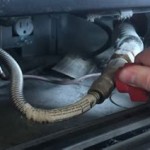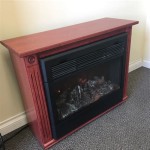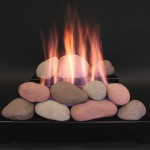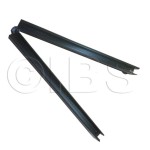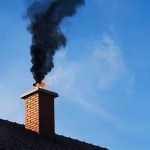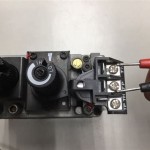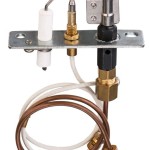How to Clean a Metal Fireplace Surround
A metal fireplace surround serves as a functional and aesthetic element, framing the fireplace opening and protecting surrounding materials from heat and soot. Over time, however, this surround can accumulate soot, dust, grime, and even rust, diminishing its appearance and potentially impacting its longevity. Regular cleaning is essential to maintain the surround's luster and integrity. The specific cleaning method will depend on the type of metal and the severity of the buildup. This article provides a comprehensive guide on how to effectively clean a metal fireplace surround, covering various metal types and cleaning techniques.
Identifying the Metal Type
Before commencing any cleaning procedure, identifying the type of metal composing the fireplace surround is paramount. Different metals react differently to cleaning agents, and using the wrong product could cause damage, discoloration, or corrosion. Common metals used in fireplace surrounds include:
Cast Iron: Characterized by its robust and often textured surface, cast iron is prone to rust if not properly maintained. It is typically black or dark gray in color.
Steel: Steel surrounds are generally smooth and more resistant to rust than cast iron, especially if they have a protective coating or finish. They can be painted or powder-coated in various colors.
Brass: Brass is a bright yellow metal known for its decorative appeal. It tarnishes readily, requiring regular polishing to maintain its shine.
Copper: Copper exhibits a reddish-brown hue that develops a green patina over time if left untreated. It is relatively soft and requires gentle cleaning to avoid scratching.
Stainless Steel: Stainless steel is highly resistant to rust and corrosion, making it a durable and low-maintenance option. It typically has a brushed or polished silver finish.
If uncertain about the metal type, consulting the fireplace manufacturer's documentation or contacting a professional fireplace installer is recommended. A simple test can also be performed in an inconspicuous area. For example, a magnet will strongly adhere to steel and cast iron but not to brass, copper, or stainless steel.
Essential Cleaning Supplies and Safety Precautions
Gathering the necessary cleaning supplies and implementing appropriate safety measures is crucial before starting the cleaning process. The specific supplies will vary depending on the metal type and the degree of soiling, but some basic essentials include:
Cleaning Solutions: Options range from mild dish soap and water to specialized metal cleaners designed for specific metal types. Avoid abrasive cleaners, especially on polished surfaces, as they can cause scratches.
Scrubbing Tools: Soft cloths, sponges, and non-abrasive scrubbing pads are essential for removing soot and grime without damaging the metal. For heavily soiled areas, a nylon-bristled brush may be necessary.
Protective Gear: Wearing rubber gloves protects hands from harsh chemicals and prevents the transfer of oils onto the metal surface. Eye protection is also recommended to safeguard against splashes or splatters.
Water and Buckets: Clean water is necessary for rinsing the surround after cleaning. Having two buckets, one for soapy water and one for rinsing, is helpful.
Polishing Cloths: For brass, copper, and stainless steel surrounds, polishing cloths are needed to restore shine after cleaning.
Rust Remover (if applicable): If rust is present, a specialized rust remover formulated for the specific metal type should be used.
Ventilation: Ensure adequate ventilation by opening windows or using a fan, especially when using chemical cleaners.
Safety Precautions: Always read and follow the instructions on cleaning product labels. Test any cleaning solution on an inconspicuous area of the surround before applying it to the entire surface. Avoid mixing different cleaning products, as this can create hazardous fumes. Disconnect any electrical components of the fireplace before cleaning.
Detailed Cleaning Procedures for Different Metal Types
The cleaning procedure should be tailored to the specific metal type of the fireplace surround. Here's a breakdown of recommended techniques for each:
Cast Iron:
1.
Preparation:
Remove loose debris with a brush or vacuum cleaner.2.
Cleaning:
Mix warm water with a mild dish soap. Apply the solution to the cast iron using a soft cloth or sponge. Gently scrub away soot and grime.3.
Rinsing:
Rinse the surround with clean water, ensuring all soap residue is removed.4.
Drying:
Thoroughly dry the cast iron with a clean cloth. Apply a thin coat of stove polish or high-temperature paint to protect the metal from rust. Follow the manufacturer's instructions for application.5.
Rust Removal (if necessary):
If rust is present, use a wire brush or sandpaper to remove loose rust. Apply a rust converter or rust remover according to the manufacturer's instructions. After the rust remover has been applied, repaint the area with high-temperature paint.Steel:
1.
Preparation:
Remove loose debris with a brush or vacuum cleaner.2.
Cleaning:
Mix warm water with mild dish soap. Apply the solution to the steel surround using a soft cloth or sponge. Gently scrub away soot and grime.3.
Rinsing:
Rinse the surround with clean water, ensuring all soap residue is removed.4.
Drying:
Thoroughly dry the steel with a clean cloth. Apply a protective coating of wax or polish specifically designed for steel to help prevent future soiling and rust.5.
Rust Removal (if necessary):
Follow the same rust removal procedure as for cast iron. Repaint the area after rust removal with a paint suitable for metal.Brass:
1.
Preparation:
Remove loose debris with a soft cloth.2.
Cleaning:
Mix warm water with a mild dish soap. Apply the solution to the brass surround using a soft cloth or sponge. Gently scrub away dirt and grime.3.
Polishing:
Apply a brass polish according to the manufacturer's instructions. Use a clean, soft cloth to polish the brass in circular motions, removing tarnish and restoring shine.4.
Buffing:
Buff the brass with a clean, dry cloth to remove any remaining polish residue and enhance the shine.5.
Protection:
Apply a thin coat of brass sealant to help prevent future tarnishing.Copper:
1.
Preparation:
Remove loose debris with a soft cloth.2.
Cleaning:
Mix warm water with mild dish soap. Apply the solution to the copper surround using a soft cloth or sponge. Gently scrub away dirt and grime.3.
Polishing:
Apply a copper polish according to the manufacturer's instructions. Use a clean, soft cloth to polish the copper in circular motions, removing tarnish and restoring shine.4.
Buffing:
Buff the copper with a clean, dry cloth to remove any remaining polish residue and enhance the shine.5.
Protection:
Apply a thin coat of copper sealant to help prevent future tarnishing.Stainless Steel:
1.
Preparation:
Remove loose debris with a soft cloth.2.
Cleaning:
Mix warm water with mild dish soap. Apply the solution to the stainless steel surround using a soft cloth or sponge. Gently scrub away dirt and grime, following the grain of the metal.3.
Rinsing:
Rinse the surround with clean water, ensuring all soap residue is removed.4.
Drying:
Thoroughly dry the stainless steel with a clean cloth.5.
Polishing:
Apply a stainless steel polish or cleaner according to the manufacturer's instructions. Use a clean, soft cloth to polish the stainless steel, following the grain of the metal. This will help to remove any remaining streaks and restore the shine.6.
Protection:
Consider applying a stainless steel protectant to help prevent future smudges and fingerprints.For stubborn stains or heavy soot buildup, consider using a specialized metal cleaner designed for the specific metal type. Always follow the manufacturer's instructions carefully and test the cleaner in an inconspicuous area first.
Addressing Stubborn Stains and Soot Buildup
In cases where simple soap and water are insufficient to remove stubborn stains or heavy soot buildup, more aggressive cleaning methods may be necessary. However, caution should be exercised to avoid damaging the metal surface.
Baking Soda Paste: A paste made from baking soda and water can be effective for removing mild stains and soot. Apply the paste to the affected area, let it sit for a few minutes, and then gently scrub with a soft cloth or sponge. Rinse thoroughly with clean water and dry.
Vinegar Solution: A solution of equal parts white vinegar and water can help to remove hard water stains and mineral deposits. Apply the solution to the affected area, let it sit for a few minutes, and then gently scrub with a soft cloth or sponge. Rinse thoroughly with clean water and dry. Avoid using vinegar on brass or copper surrounds, as it can cause discoloration.
Commercial Soot Removers: Several commercial soot removers are available specifically designed for cleaning fireplace surrounds. These products are typically formulated to dissolve soot and grime without damaging metal surfaces. Always follow the manufacturer's instructions carefully and test the product in an inconspicuous area first.
Professional Cleaning: For extremely stubborn stains or if you are unsure about the best cleaning method, consider hiring a professional fireplace cleaner. They have the expertise and specialized equipment to safely and effectively clean metal fireplace surrounds.
Regardless of the cleaning method used, it is essential to rinse the surround thoroughly with clean water and dry it completely to prevent water spots and corrosion.
By following these guidelines and paying attention to the specific needs of each metal type, one can maintain a clean and attractive metal fireplace surround, enhancing the aesthetic appeal of the fireplace and prolonging the lifespan of the surround.
How To Clean Your Fireplace With Brasso

How To Re A Cast Iron Fireplace

Making A Permanently Clean Fireplace Step 1 Of Our Makeover Pocketful Posies

How To Re A Cast Iron Fireplace Direct Fireplaces

Tips For Cleaning Your Fireplace Direct Fireplaces

How To Clean A Metal Fireplace Surround Ehow

How To Clean A Fireplace The Home Depot

How To Re A Cast Iron Fireplace Direct Fireplaces

How To Keep Cast Iron Fireplaces Clean

How To Refinish Cast Iron And Broe Fireplace Surrounds Faqs Q A Forum

